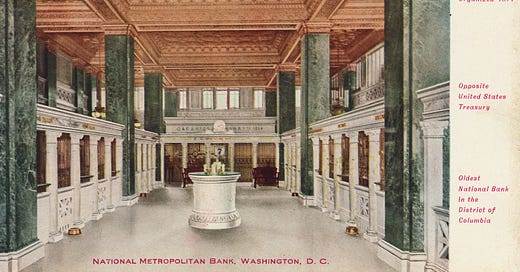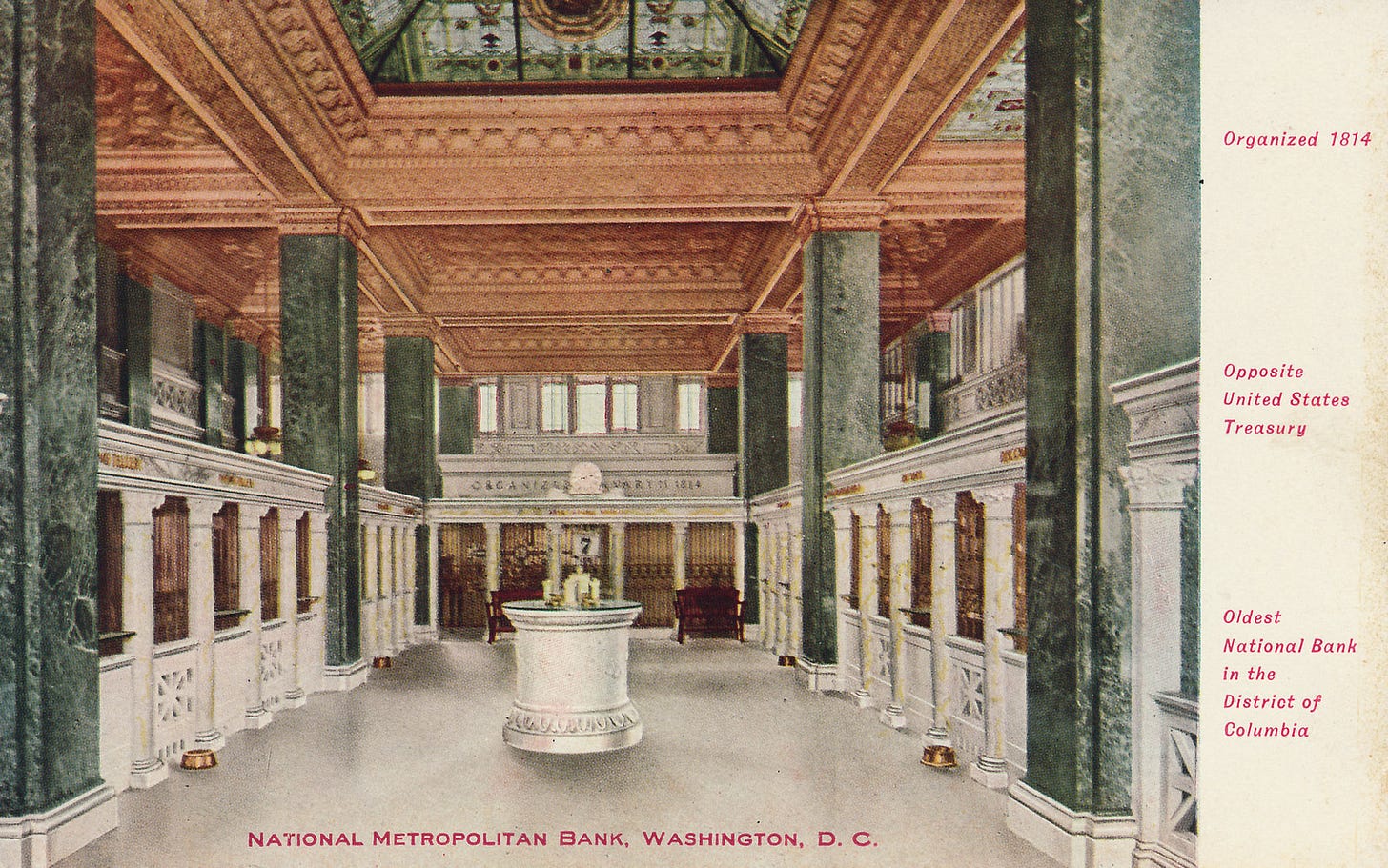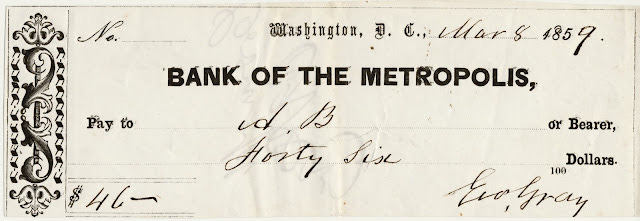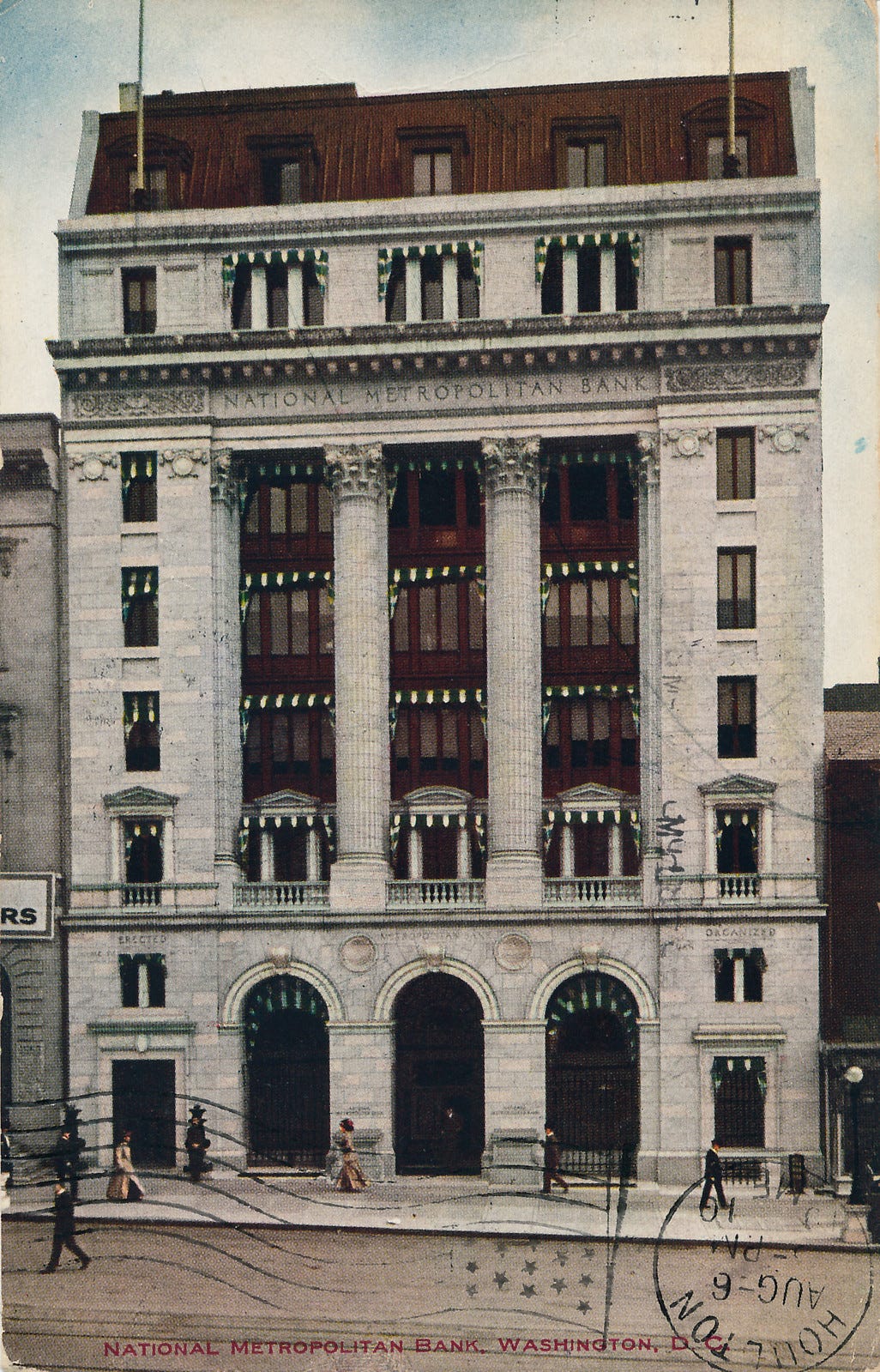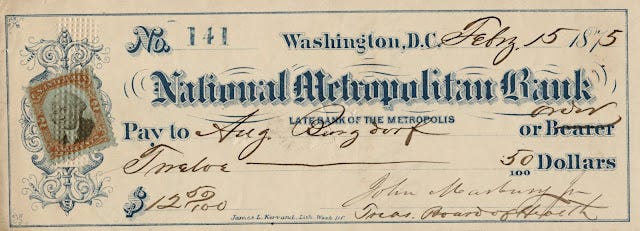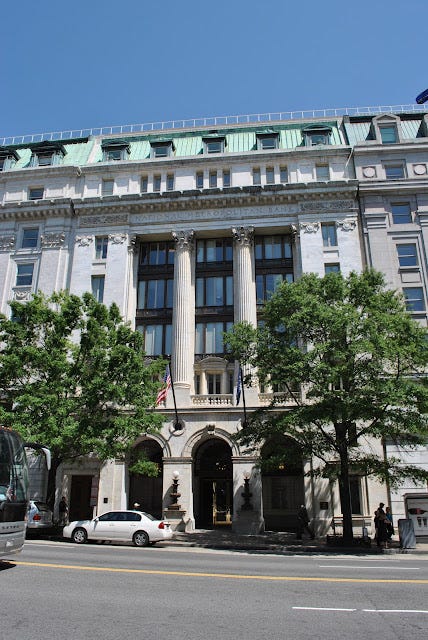The Oldest National Bank in the District
This week's vintage postcard depicts the extraordinary marble banking lobby of the National Metropolitan Bank at 613 15th Street NW, circa 1907, around the time the building was completed. The card boasts that the National Metropolitan is the "Oldest National Bank in the District of Columbia," having been organized in January 1814. The claim is a bit deceptive. The rival National Bank of Washington was actually five years older, having been established as the Bank of Washington in 1809. However the National Metropolitan Bank was reorganized in 1865 under the National Banking Act, and in 1907 it was the oldest national bank in DC. So there you have it.
(Author's collection.)
The Bank of the Metropolis, as it was originally called, opened for business in March 1814; its original building was the historic Rhodes Tavern at the southern end of this same block. Of course, 1814 was not an auspicious year to start a business in Washington. Only five months after the bank took up residence in Rhodes Tavern, the British arrived and methodically burned the public buildings of Washington. After they set the Treasury Department building and the White House on fire, they considered torching Rhodes Tavern as well. However a certain Sarah Sweeny, a “woman of reduced circumstances” who worked as a custodian for the bank, fended them off and saved the building. Sweeny was later awarded $100 by the bank “for her friendly agency in interceding with some British officers…to prevent the conflagration of the Banking House,” according to the Daily National Intelligencer. The bank went on to loan the government $100,000 to aid in rebuilding the public buildings of Washington destroyed by the British.
An 1859 check from the Bank of the Metropolis (author's collection).
The 1907 National Metropolitan Bank building, circa 1910 (author's collection).
In 1836 the bank moved half way up the block to its final location at 613 15th Street NW, occupying another Federal style building not unlike Rhodes Tavern. That same year President Andrew Jackson made the bank the depository for federal funds after he refused to extend the charter of the Bank of the United States. The bank flourished here for many decades and through the ups and downs of prosperity and financial crises, being renamed and reorganized in 1865. Finally in 1907 its old building was torn down and replaced with an elegant and imposing Beaux Arts structure. The new building was designed by Washington architect B. Stanley Simmons (1871-1931). The Washington Times called it a "masterpiece of architectural art" when it was completed. The newspaper marveled at the grand banking lobby, two stories tall, finished "in bronze and marble with fine mahogany fittings," and crowned by a "magnificent domed skylight."
Check from the National Metropolitan Bank (author's collection).
Up the street at H Street NW, the new Union Trust Company building also went up in 1907 as did the Hibbs Building in the middle of that block. It all led the Times to christen 15th Street the "Wall Street of Washington." A financial panic that same year would eventually cool a little of the enthusiasm.
The facade of the National Metropolitan Bank (photo by the author).
The National Metropolitan Bank remained in business until 1958, when it merged with the American Security & Trust Company. Unfortunately, several years earlier the bank had undertaken a drastic remodeling and modernization of the grand banking lobby, destroying most of its ornate decor. Twenty years later the building was added to the National Register of Historic Places. The nomination form, completed by Don't Tear It Down (predecessor of the D.C. Preservation League) notes that the lobby had been altered and that "no documentary evidence remains to illustrate the original appearance of the interior, and the exact nature of the alterations is unknown." Too bad they didn't have this postcard to refer to!
I've previously told the story of how the Rhodes Tavern was lost and only the facades saved of the National Metropolitan Bank and the adjoining Keith-Albee Building, so I will not retell it here. Suffice it say that the grand facade of the bank survives, and its noble, neoclassical entrance now leads anticlimactically into the lobby of the Metropolitan Square office building.

